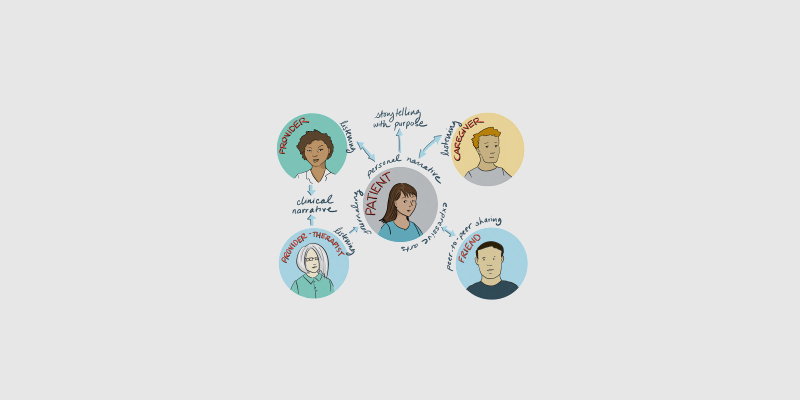
Literature has long served as a mirror reflecting the complexities of human experience, including the intricate world of hospital life. Through narratives of care, literature provides insights into the emotional, ethical, and social dimensions of healthcare. This article explores how literature enhances our understanding of hospital life, the experiences of patients and healthcare providers, and the broader implications for empathy and communication in medical settings.
The Power of Storytelling in Healthcare

1. Humanizing the Patient Experience
- Personal Narratives: Stories from patients offer a glimpse into their struggles, fears, and hopes during inca hospital stays. These narratives humanize the often clinical and sterile environment of healthcare, reminding us of the individuals behind the diagnoses.
- Emotional Resonance: Literature captures the emotional turmoil associated with illness, treatment, and recovery, fostering empathy among readers and healthcare professionals.
2. Perspectives of Healthcare Providers
- Provider Narratives: Literature also provides insights into the experiences of doctors, nurses, and other healthcare workers. These narratives reveal the challenges they face, including burnout, ethical dilemmas, and the impact of their work on personal lives.
- Building Empathy: Understanding the perspectives of healthcare providers can cultivate empathy among patients and their families, promoting better communication and collaboration in care.
Enhancing Communication and Understanding
1. Bridging the Gap
- Cultural Context: Literature often explores cultural differences in health beliefs and practices knowledge. By reading diverse narratives, healthcare professionals can better understand the cultural contexts of their patients, leading to more personalized care.
- Language and Metaphor: The use of metaphor in literature can help articulate complex medical experiences, making them more relatable and understandable for patients and families.
2. Encouraging Reflection
- Critical Reflection: Engaging with literature encourages healthcare providers to reflect on their own experiences and biases. This reflection can lead to improved patient interactions and a more compassionate approach to care.
- Ethical Considerations: Stories that delve into ethical dilemmas in healthcare can prompt discussions about morality, responsibility, and the implications of medical decisions.
Literature as a Tool for Education
1. Medical Humanities
- Interdisciplinary Approach: Incorporating literature into medical education fosters a more holistic understanding of patient care. The medical humanities bridge the gap between science and the human experience, enhancing training for future healthcare providers.
- Case Studies in Narrative: Analyzing literary works that depict illness and healthcare can serve as case studies for medical students, providing valuable lessons in empathy, communication, and ethics.
2. Workshops and Discussions
- Literature Circles: Organizing literature circles or book clubs for healthcare professionals can facilitate discussions about narratives of care, promoting shared learning and understanding among staff.
- Creative Writing: Encouraging healthcare providers to engage in creative writing can help them process their experiences and emotions, ultimately improving their connection to patients.
Notable Works in Literature about Hospital Life
1. “The Emperor of All Maladies” by Siddhartha Mukherjee
- Overview: This Pulitzer Prize-winning biography of cancer intertwines personal stories with the history of cancer treatment, illustrating the human side of a disease that affects millions.
- Impact: Mukherjee’s narrative provides insight into the emotional landscape of patients and the relentless pursuit of understanding and treating cancer.
2. “When Breath Becomes Air” by Paul Kalanithi
- Overview: Written by a neurosurgeon diagnosed with terminal cancer, this memoir explores the intersection of medicine and personal experience.
- Impact: Kalanithi’s reflections on life, death, and the role of a physician resonate deeply with readers, offering profound insights into the human condition.
3. “The Fault in Our Stars” by John Green
- Overview: This young adult novel follows two teenagers with cancer as they navigate love, loss, and the complexities of illness.
- Impact: By portraying the realities of living with a chronic illness, Green’s narrative fosters empathy and understanding among readers of all ages.
Conclusion
Literature serves as a vital tool for enhancing our understanding of hospital life, offering rich narratives that illuminate the experiences of patients and healthcare providers alike. By engaging with these stories, we can foster empathy, improve communication, and promote a more compassionate approach to care. As we continue to explore the narratives of care, literature remains an invaluable resource for enriching our understanding of the human experience within the healthcare system.
Read Also About In storytelling, the antagonist is a key character or force that opposes the protagonist and creates conflict. This opposition is often what drives the plot forward, challenging the protagonist’s goals, values, and motivations.
Related Posts
 Bukti sosial dan pengaruhnya pada perilaku manusia modern
Bukti sosial dan pengaruhnya pada perilaku manusia modern
 Hubungan Antarbudaya: Keterampilan Esensial Mahasiswa di Era Global yang Terhubung
Hubungan Antarbudaya: Keterampilan Esensial Mahasiswa di Era Global yang Terhubung
 Lecturers: Expert Educators Delivering Academic Instruction and Guidance – Why Their Role is More Than You Think
Lecturers: Expert Educators Delivering Academic Instruction and Guidance – Why Their Role is More Than You Think
 Pendidikan Moral: Fondasi Karakter dan Etika Generasi Masa Depan
Pendidikan Moral: Fondasi Karakter dan Etika Generasi Masa Depan



